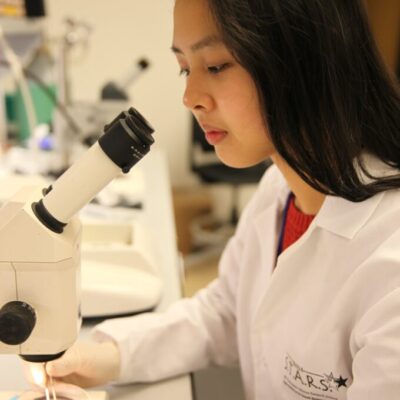Yizhen Zhang L&S Sciences
How do Newborn Mammals Respond to Light?
Vision is one of the most important senses in vertebrates. In adults, photoreceptors in the retina convert light into electrical signals, interneurons modify these signals, and retinal ganglion cells (RGCs) integrate the signals and send output to the brain. In most newborn mammals, photoreceptors and interneurons are not yet fully functional. However, newborns still respond to light. How are they seeing?
A RGC subpopulation are atypical photoreceptors that respond to light in development. These intrinsically photosensitive RGCs (ipRGCs) encode light intensity and send output to the brains centers for mood and biological rhythms. IpRGCs express melanopsin, a unique light-sensing protein, allowing light response without conventional-photoreceptors. In mice, ipRGCs are light responsive from the day of birth, indicated by reflexive sensory behaviors such as photoaversion, turning away from light. Our recent work demonstrated in vitro that ipRGCs formed electrical connections, called gap junctions, with each other, a rapid form of inter-neuronal communication. This connection is modulated by the neurochemical dopamine. Therefore, I propose to determine whether gap junction coupling and dopamine signaling influence ipRGC-mediated behavior, photoaversion.
Message To Sponsor
Thank you very much to the Pergo Fund for supporting my explorations and adventures this summer. Words cannot describe how grateful I am for your generosity for helping make research and learning opportunities like this available. This was an unforgettable experience that will undoubtedly shape many facets of my future journeys. Thank you very much!